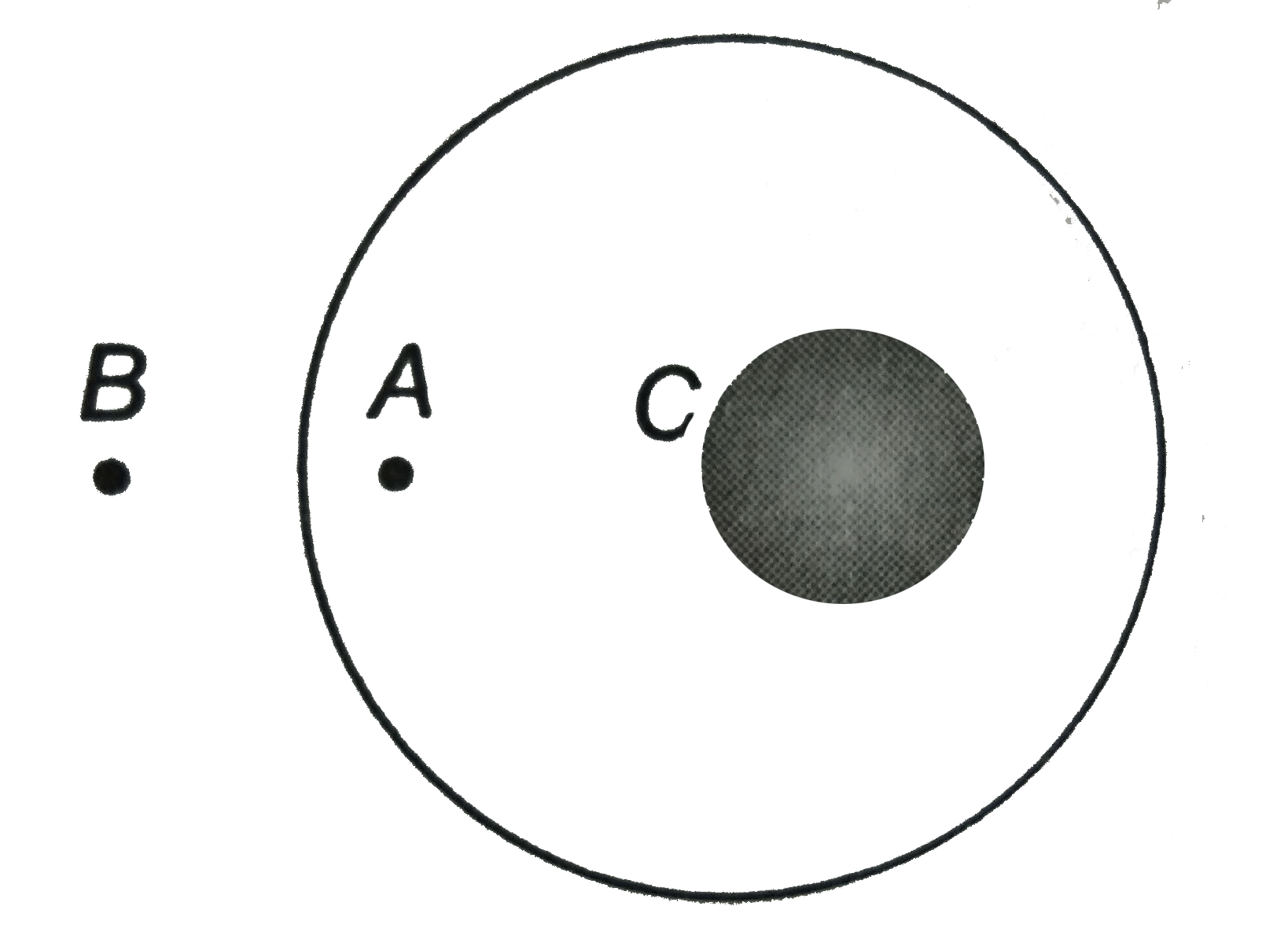A solid sphere of radius R made of a material of bulk modulus K is surrounded by a liquid in a cylindrical container. A massless piston of area A floats on the surface of the liquid. When a mass M is placed on the piston to compress the liquid the fractional change in the radius of the sphere, δR/R, is .............
Mg/2AK
Mg/3AK
Mg/AK
2Mg/3AK
The correct Answer is:B
To find the fractional change in the radius of a solid sphere when a mass is placed on a piston floating on a liquid, we can follow these steps:
Step 1: Understand the Bulk Modulus
The bulk modulus K is defined as:
K=−ΔPΔVV
where ΔP is the change in pressure, ΔV is the change in volume, and V is the original volume.
Step 2: Relate Change in Pressure to the Mass on the Piston
When a mass M is placed on the piston, the change in pressure ΔP can be expressed as:
ΔP=MgA
where g is the acceleration due to gravity and A is the area of the piston.
Step 3: Substitute Change in Pressure into the Bulk Modulus Equation
Substituting ΔP into the bulk modulus equation gives:
K=−Mg/AΔVV
Rearranging this, we can express the change in volume as:
ΔVV=−MgAK
Step 4: Determine the Volume Change of the Sphere
The volume V of a sphere with radius R is given by:
V=43πR3
The change in volume ΔV when the radius changes by ΔR can be approximated using the formula for the volume of a sphere:
ΔV=Vf−Vi=43π(R−ΔR)3−43πR3
Using the binomial approximation for small changes, we can simplify this to:
ΔV≈−4πR2ΔR
Step 5: Substitute Volume Change into the Volume Fraction Equation
Now, substituting ΔV into the equation we derived from the bulk modulus:
−4πR2ΔR43πR3=−MgAK
This simplifies to:
−3ΔRR=−MgAK
Step 6: Solve for the Fractional Change in Radius
Rearranging gives us:
ΔRR=Mg3AK
Final Answer
Thus, the fractional change in the radius of the sphere is:
ΔRR=Mg3AK
The bulk modulus K is defined as:
K=−ΔPΔVV
where ΔP is the change in pressure, ΔV is the change in volume, and V is the original volume.
When a mass M is placed on the piston, the change in pressure ΔP can be expressed as:
ΔP=MgA
where g is the acceleration due to gravity and A is the area of the piston.
Substituting ΔP into the bulk modulus equation gives:
K=−Mg/AΔVV
Rearranging this, we can express the change in volume as:
ΔVV=−MgAK
The volume V of a sphere with radius R is given by:
V=43πR3
The change in volume ΔV when the radius changes by ΔR can be approximated using the formula for the volume of a sphere:
ΔV=Vf−Vi=43π(R−ΔR)3−43πR3
Using the binomial approximation for small changes, we can simplify this to:
ΔV≈−4πR2ΔR
Now, substituting ΔV into the equation we derived from the bulk modulus:
−4πR2ΔR43πR3=−MgAK
This simplifies to:
−3ΔRR=−MgAK
Rearranging gives us:
ΔRR=Mg3AK
Thus, the fractional change in the radius of the sphere is:
ΔRR=Mg3AK
Topper's Solved these Questions
- MECHANICAL PROPERTIES OF SOLIDSBOOK - NCERT FINGERTPS ENGLISHCHAPTER - MECHANICAL PROPERTIES OF SOLIDSEXERCISE - NCERT
8 Videos
- MECHANICAL PROPERTIES OF SOLIDSBOOK - NCERT FINGERTPS ENGLISHCHAPTER - MECHANICAL PROPERTIES OF SOLIDSEXERCISE - CORNER
15 Videos
- MECHANICAL PROPERTIES OF SOLIDSBOOK - NCERT FINGERTPS ENGLISHCHAPTER - MECHANICAL PROPERTIES OF SOLIDSEXERCISE - APPLICATIONS OF ELASTIC BEHAVIOUR OF MATERIALS
8 Videos
- MECHANICAL PROPERTIES OF FLUIDSBOOK - NCERT FINGERTPS ENGLISHCHAPTER - MECHANICAL PROPERTIES OF FLUIDSEXERCISE - NCERT Exemplar
5 Videos
- MOTION IN A PLANE BOOK - NCERT FINGERTPS ENGLISHCHAPTER - MOTION IN A PLANE EXERCISE - Assertion And Reason
15 Videos
Similar Questions
A solid sphere of radius R made of a material of bulk modulus B is surrounded by a liquid in a cylindrical container. A massless piston of area A (the area of container is also A) floats on the surface of the liquid. When a mass M is placed on the piston to compress the liquid , fractional change in radius of the sphere is MgαAB. Find the value of α.
View SolutionA rubber ball of bulk modulus B is taken to a depth h of a liquid of density ρ. Find the fractional change in the radius of the ball.
View Solution
Knowledge Check
Two identical spheres each of mass M and Radius R are separated by a distance 10R. The gravitational force on mass m placed at the midpoint of the line joining the centres of the spheres is
AzeroB2GMm25R2CGMm25R2DGMm100R2
Three solid sphere of mass M and radius R are placed in contact as shown in figure. Find the potential energy of the system ?
View SolutionA uniform metal sphere of radius R and mass m is surrounded by a thin uniform spherical shell of same mass and radius 4R. The centre of the shell C falls on the surface of the inner sphere. Find the gravitational fields at points A and B.

View SolutionA chain of length l and mass m lies on the surface of a smooth sphere of radius R>l with one end tied to the top of the sphere.
View SolutionA sphere of radius R and made of material of relative density σ has a concentric cavity of radius r. It just floats when placed in a tank full of water. The value of the ratio R/r will be
View SolutionA uniform solid sphere of mass m and radius r is suspended symmetrically by a uniform thin spherical shell of radius 2r and mass m.
View SolutionA solid sphere of radius R is placed on a cube of side 2R. Both are made of same material. Find the distance of their centre of mass fro the interface.
View SolutionA solid sphere of mass M and radius R has a spherical cavity of radius R/2 such that the centre of cavity is at a distance R/2 from the centre of the sphere. A point mass m is placed inside the cavity at a distanace R/4 from the centre of sphere. The gravitational force on mass m is
View Solution
